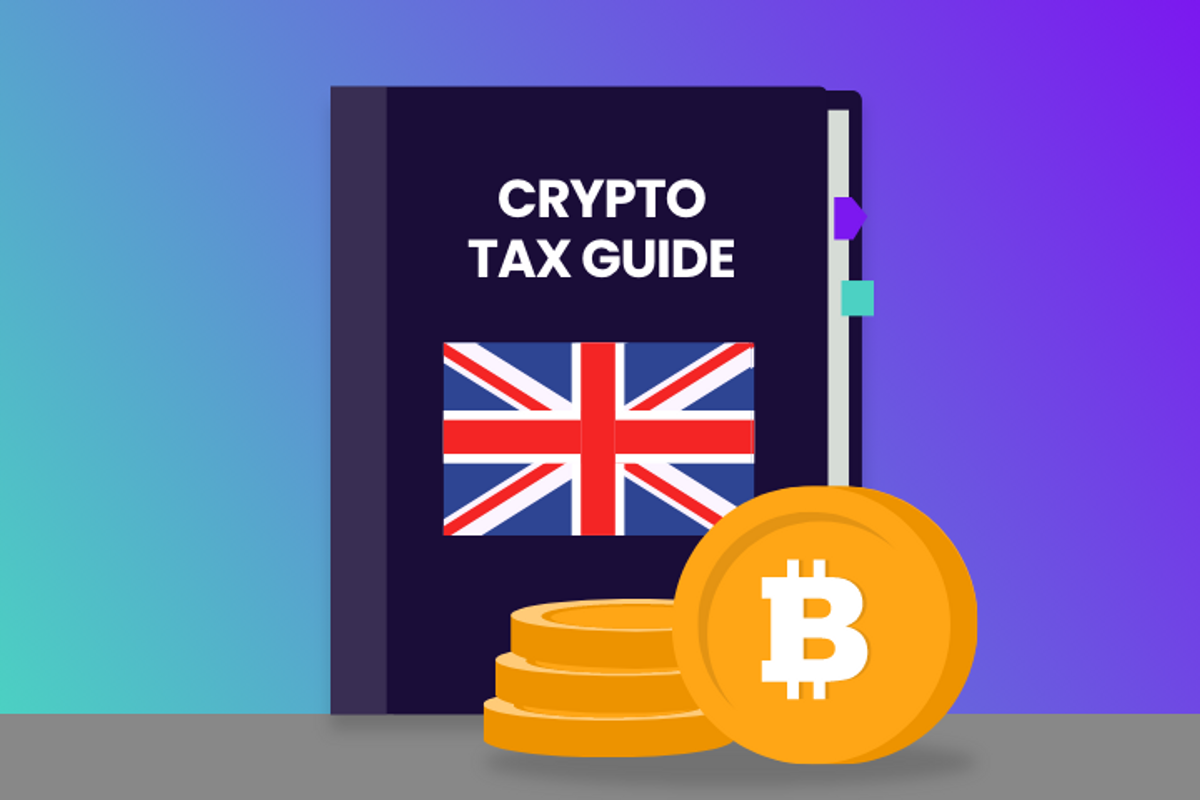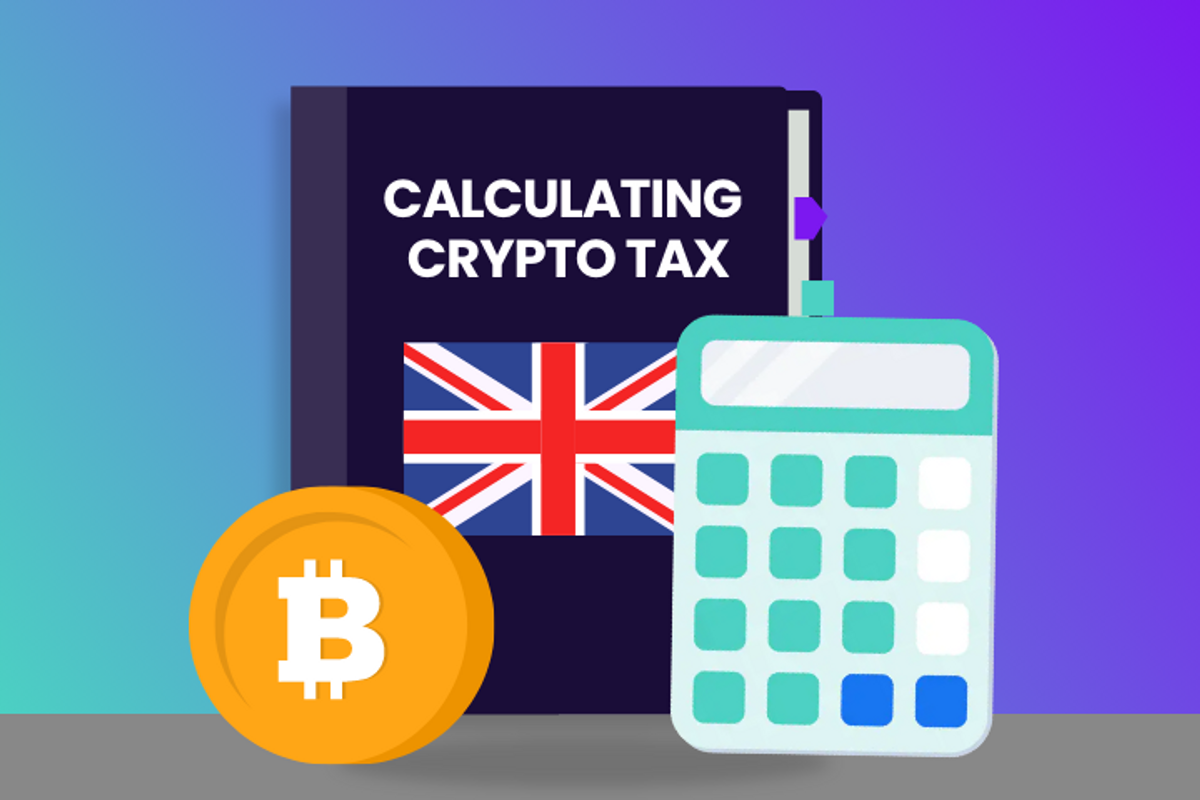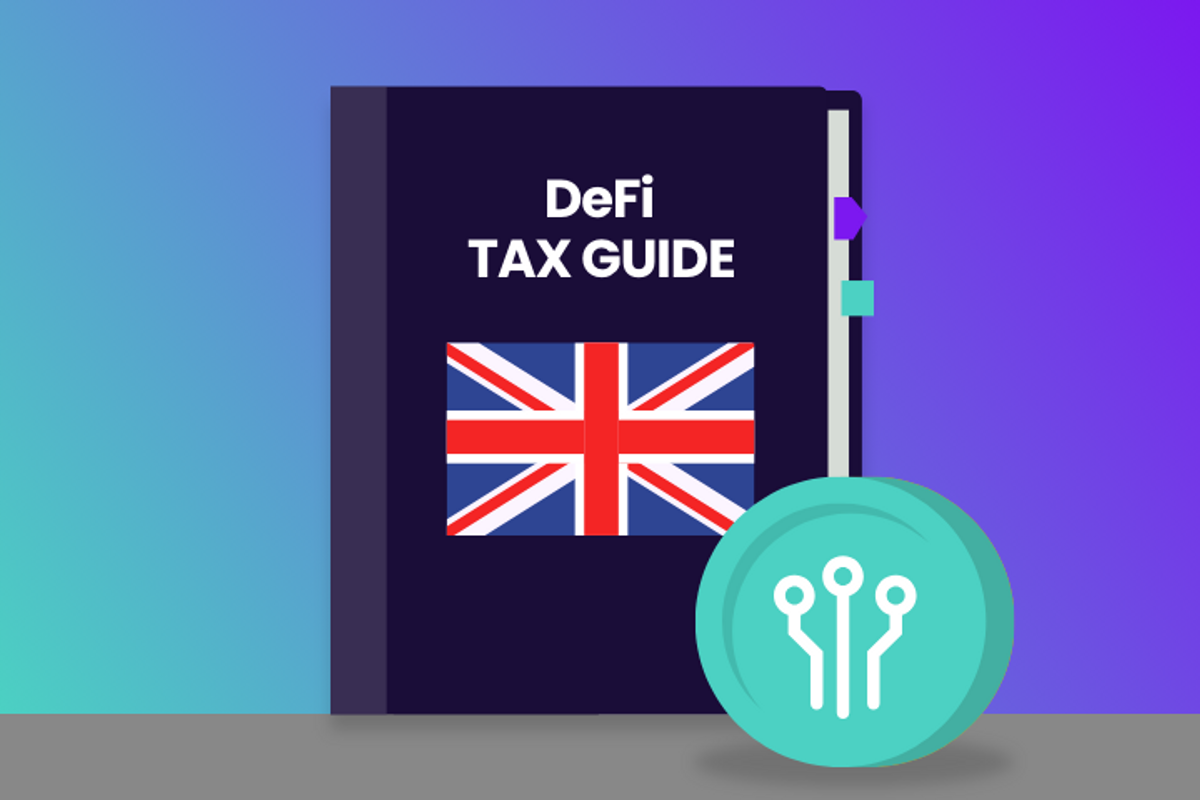
When calculating your crypto taxes one of the most important things to understand is the cost basis of your crypto assets. In order to accurately calculate your capital gains and losses, you need to know how to work out your cost basis, which may also be referred to as allowable costs. Unfortunately, keeping track of your cost basis can be difficult for crypto investors, especially if you own multiple kinds of the same asset, have made lots of transactions or frequently move your assets between different exchanges and wallets.
In this article, we’ll explain what cost basis is, take a look at different cost basis methods, and find out how to calculate your cost basis in the UK. We will also delve into the matching rules in detail to understand when to apply 'same day', 'bed and breakfast', or 'section 104 pool' rules.
What is crypto cost basis?
Crypto cost basis, also referred to as allowable costs, is the price you originally paid for your crypto asset, including any transaction fees and commissions and is essential for accurately calculating your tax liability in the UK.
In the UK, HMRC has specific rules for cost basis known as the share pooling method. Different rules apply depending on whether you already own the same crypto asset and when it was acquired, to ensure that gains and losses cannot be manipulated. Understanding the cost basis is crucial for crypto investors, especially when it comes to taxation, because to calculate your capital gain you subtract the cost basis from the disposal proceeds (the price you sold your asset for).
Why is calculating the cost basis of your crypto assets challenging?
Although cost basis seems like a simple concept, it can be challenging for crypto investors to keep track of due to several factors:
- Price volatility of crypto
The volatility and fluctuating price of crypto make it hard to determine the cost basis of an asset at a particular time. - Volume of crypto transactions
It’s likely you’ll have acquisitions of the same asset but at different prices, times, from different places and movement between different exchanges and wallets. Keeping track of all these transactions accurately with the correct cost basis is challenging. Moreover, there are no standard reporting methods for exchanges, leading to varying data formats and potential gaps in information. HMRC is clear that record keeping is the responsibility of the individual. - Different cost basis methods
There are many different cost basis methods and rules depending on your tax jurisdiction. Navigating these and understanding which approach is correct can be really confusing!
What is average cost basis (ACB)?
The Average Cost Basis (ACB) is a simple method for calculating cost basis that results in an average price, you simply divide the total cost of your assets by the total number you are holding. For example if you have 10 ETH bought at different times, add up all your different purchase costs then divide by 10 to find the average cost of 1 of your Ethereum tokens.
Some countries use average cost basis to calculate the capital gains on crypto but most of these countries also incorporate their own additional rules to prevent crypto investors taking advantage of wash sale capital losses. For example, Canada uses the Adjusted Cost Basis Method and France uses the Weighted Average Acquisition Price. The UK uses a concept called the Share Pooling method to prevent investors purchasing and selling assets in a short period of time to manipulate gains and losses. We explore how this works in detail below.
Using the pooling method to calculate crypto cost basis in the UK
HMRC are clear that UK taxpayers must use the Section 104 (S104) pooling method to establish their crypto cost basis and calculate their crypto gains and losses.
HMRC describes the concept of pooling as: “Instead of tracking the gain or loss for each transaction individually, each type of cryptoasset is kept in a ‘pool’. The consideration (in pounds sterling) originally paid for the tokens goes into the pool to create the ‘pooled allowable cost’”.
The pooling method identifies which crypto asset has been sold and prevents individuals purchasing and selling assets in a short period of time in order to manipulate gains and losses, which is known as a wash sale.
The matching rules
To work out your cost basis you should follow the ‘matching rules’ as set out below, this determines the order in which crypto assets are deemed to have been sold.
On the disposal of crypto assets, they are first matched with acquisitions:
- made on the same day (same day rule), then
- made in the next 30 days; on a first-in first-out basis (bed and breakfasting rule), then
- Section 104 pool - the rest of the acquisitions are aggregated in the S104 pool, creating a pro-rata ‘average cost’ per token in the pool.
Same day rule
When disposing of a crypto asset acquired on the same day, then the same day rule applies to the cost basis.
Example: Same day rule
Martyn holds 5,000 token B in a section 104 pool. He spent a total of £500 acquiring them, which is his pooled allowable cost.
On 23 June Martyn makes the following transactions:
- Morning – he disposes of 1,000 token B for £800
- Afternoon – he acquires 1,600 token B for £1,000
- Evening – he disposes of 500 token B for £600
As Martyn’s disposals both take place on the same day, they are treated as a single disposal of 1,500 token B for £1,400.
Because Martyn made an acquisition of token B on the same day, this is matched with the disposal and used for his cost basis.
Martyn will need to work out the gain on his disposal of 1,500 token B as follows:
| Disposal proceeds | £800 + £600 | £1,400 |
|---|---|---|
| Less allowable costs | £1,000 x (1,500 / 1,600) | £938 |
| Gain | £462 |
The remaining 100 token B, and their associated cost of £62 (£1,000 x (100 / 1,600)) will go into the section 104 pool. The section 104 pool now contains 5,100 token B and total pooled costs of £562:
| Date | Quantity of token B | Pooled allowable costs |
|---|---|---|
| Opening balance | 5,000 | £500 |
| 23/06 | +100 | +£62 |
| Closing balance | 5,100 | £562 |
Bed and breakfasting rule
The Bed and Breakfasting rule, also known as the 30-day rule, applies when the disposal cannot be matched with acquisitions on the same day. If any acquisitions are made in the next 30 days, then that becomes the cost basis for the capital gains calculation, based on a first-in first-out basis.
Example: Bed and breakfasting (30-day) rule
Rachel holds 2,000 token C in a section 104 pool. She spent a total of £1,000 to acquire them, which is her pooled allowable cost.
Rachel makes the following transactions:
- On 31 March Rachel disposes of 1,000 token C for £400
- On 20 April Rachel disposes of 500 token C for £150
- On 21 April Rachel acquires 700 token C for £175
- On 28 April Rachel acquires 500 token C for £100
- On 1 May Rachel acquires 500 token C for £150
The same day rule does not apply here, so next we look at the bed and breakfast rule. Acquisitions within 30 days of a disposal are matched on the basis of the earliest acquisition being matched to a disposal.
The acquisitions on 21 April and 28 April take place within 30 days of the disposal on 31 March. and are matched as far as possible. The acquisitions on 28 April and 1 May take place within 30 days of the disposal on 20 April and are matched to the disposal on 20 April as far as is possible.
Rachel will need to work out the gain on her two disposals as follows:
31 March: disposal of 1,000 token C for £400
| Disposal Proceeds | £400 | |
|---|---|---|
| Less allowable costs 700 token C (21/04) | £175 | |
| Less allowable costs 300 token C (28/04) | £100 x (300 / 500) | £60 |
| Gain | £165 |
20 April: disposal of 500 token C for £150
| Disposals Proceeds | £150 | |
|---|---|---|
| Less allowable costs 200 token C (28/04) | £100 x (200 / 500) | -£40 |
| Less allowable costs 300 token C (01/05) | £150 x (300 / 500) | -£90 |
| Gain | £20 |
The remaining 200 token C and their associated cost of £60 (£150 x (200 / 500)) will go into the section 104 pool. The section 104 pool now contain 2,200 token C and total pooled costs of £1,060:
| Date | Quantity of token C | Pooled allowable costs |
|---|---|---|
| Opening balance | 2,000 | £1,000 |
| 01/05 | +200 | +£60 |
| Closing balance | 2,200 | £1,060 |
Section 104 rule
When the same day rule and bed and breakfast rule do not apply the cost basis is determined by the S104 rule.
There is a S104 pool for each type of crypto asset token held. When assets are held for longer than 30 days they will be added into a S104 pool. An average cost for the crypto assets in the pool is maintained and when a disposal of the crypto asset is made this establishes the cost basis of the asset for the capital gains calculation.
Example: Section 104 pool
Victoria bought 100 token A for £1,000. On 18 September Victoria bought a further 50 token A for £125,000. Victoria is treated as having a section 104 pool of 150 of token A with total allowable costs of £126,000:
| Date | Quantity of token A | Pooled allowable costs |
|---|---|---|
| Opening balance | 100 | £1,000 |
| 18/09 | +50 | +£125,000 |
| Closing balance | 150 | £126,000 |
On 1 December Victoria sells 50 of her token A for £300,000. Victoria will be allowed to deduct a proportion of the pooled allowable costs when working out her gain:
| Disposal proceeds | £300,000 | |
|---|---|---|
| Less allowable costs | £126,000 x (50 / 150) | £42,000 |
| Gain | £258,000 |
Victoria has a gain of £258,000 subject to Capital Gains Tax. She has 100 token A remaining in the section 104 pool with total allowable costs of £84,000:
| Date | Quantity of token A | Pooled allowable costs |
|---|---|---|
| Opening balance | 150 | £126,000 |
| 01/12 | -50 | -£42,000 |
| Closing balance | 100 | £84,000 |
What happens when more than one of the matching rules comes into play?
Sometimes more than one rule may come into play, we have highlighted this using the example below.
Example: Interaction of same day rule, 30 day rule and section 104 pool
Gulferaz holds 100,000 token F in a section 104 pool and spent a total of £300,000 acquiring them, which is his pooled allowable cost.
Gulferaz makes the following transactions:
- 31 July – acquisition of 10,000 token F for £45,000.
- 31 July – disposal of 30,000 token F for £150,000
- 5 August – disposal of 20,000 token F for £100,000
- 6 August – acquisition of 50,000 token F for £225,000
- 7 August – disposal of 100,000 token F for £150,000
Gulferaz’s acquisition on 31 July takes place on the same day as the 31 July disposal so those transactions are matched as far as possible (10,000 token F).
The remaining tokens for this disposal (20,000 token F) can be matched with Gulferaz’s acquisition on 6 August 20 which takes place within 30 days of the disposal.
Gulferaz’s disposal of 20,000 token F on 5 August, takes place within 30 days of the 6th August acquisition so they are also matched.
The remaining 10,000 token F acquired on 6 August goes into the section 104 pool.
Gulferaz will need to work out his gains/losses on the three disposals as follows:
31 July: disposal of 30,000 token F for £150,000
| Disposal proceeds | £150,000 | ||
|---|---|---|---|
| Less allowable costs (same day) | 10,000 token F | £45,000 | |
| Less allowable costs (30 day) | 20,000 token F (06/08) | £225,000 x (20,000 / 50,000) | £90,000 |
| Gain | £15,000 |
5 August: disposal of 20,000 token F for £100,000
| Disposal proceeds | £100,000 | ||
|---|---|---|---|
| Less allowable costs (30 day) | 20,000 token F (06/08) | £225,000 x (20,000 / 50,000) | £90,000 |
| Gain | £10,000 |
6 August: pool change
The remaining 10,000 token F from this acquisition and their associated cost of £45,000 (£225,000 x (10,000 / 50,000) go into the section 104 pool, which is changed as follows:
| Date | Quantity of token F | Pooled allowable costs |
|---|---|---|
| Opening balance | 100,000 | £300,000 |
| 06/08 | +10,000 | +£45,000 |
| Closing balance | 110,000 | £345,000 |
7 August: disposal of 100,000 token F for £150,000
| Disposal proceeds | £150,000 | |
|---|---|---|
| Less allowable costs (S104 pool) | £345,000 x (100,000 / 110,000) | £313,637 |
| Loss | £163,637 |
The section 104 pool is changed as follows:
| Date | Quantity of token F | Pooled allowable costs |
|---|---|---|
| Opening balance | 110,000 | £345,000 |
| 07/08 | -100,000 | -£313,637 |
| Closing balance | 10,000 | £31,363 |
Using a crypto cost basis calculator
Working out your cost basis is complicated and time-consuming especially for crypto investors with lots of transactions. This is where specialised software like Recap becomes invaluable. Recap tracks all of your transactions across your connected exchanges and wallets automatically identifying your cost basis and calculating your capital gains position from crypto.
Benefits of using crypto tax software
Using crypto tax software like Recap offers several advantages:
- Automatically track all of your transactions: the software automatically logs all your crypto transactions, saving you the effort of manual record-keeping.
- Record keeping done for you and backed up: Recap securely stores your transaction data, ensuring it is safely backed up.
- No need to understand matching rules: the software handles the complex matching rules, accurately identifying your cost basis for each transaction.
- Ensures accuracy: by automating the process, the risk of manual errors is minimised, ensuring accurate calculations for your tax liability.
- Peace of mind that you are filing an accurate tax return: crypto tax software gives you confidence that your tax return is precise and in line with HMRC regulations.



